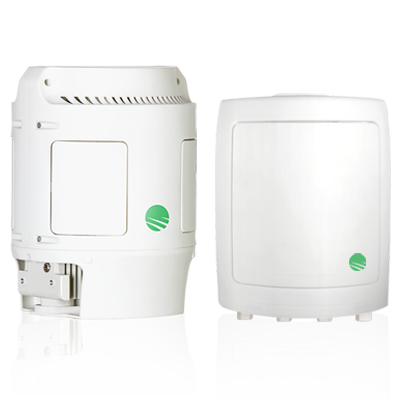High-band mmWave – Plenty of Bandwidth and Flexibility to Meet the Requirements in the “X-Haul” Portion of a 5G Network Architecture.
Read more-
SEARCH BY KEYWORD
-
SELECT BY YEAR
-
SEARCH BY CATEGORY
Recently, all we hear about is change. How the virus changed our lives, how the virus changed our environment, how it will change our future. All of this is true. All is concerning. Still, life...
Read moreAs we enter the third decade of the century, it is a given that we now live in a Gigabit World. Delivering those gigabits wirelessly is now all the rage, and as with all “new” technologies there are...
Read moreTo meet the insatiable need for more and more bits per second in the world we live in, the wireless ecosystem turned to the only spectrum that is capable of delivering on the gigabit promise - 60GHz...
Read moreIt’s a Gigabit World and not just for business. Consumers are part of the push and are demanding gigabit connections to support bandwidth intensive applications such as 4k or even 8k video, Augmented...
Read moreSince the beginning of wireless there has been a hard and fast trade-off between capacity and range. The further a wireless connection can go, the less data it can support and vice versa. Today’s...
Read moreFixed Wireless Access, FWA, has been around for a while, as noted in previous blogs. For the past 5 to 10 years the majority of fixed wireless access (FWA) deployments and market share has been...
Read moreThere was a time when my ISDN connection had all the throughput I needed. Two voice plus data got me 144kbps, well fast enough for my email and web browsing. Fast forward to Netlfix shifting to a...
Read moreBRYONY BARNES, Marketing Expert at Purdicom - July 23, 2018 - Have you ever forgotten your phone when you’ve left the house, and felt utterly lost without it? It isn’t that surprising, considering...
Read moreIn the old days, outdoor fixed wireless access (FWA) was primarily used for one simple yet powerful application – point to point (PTP) cell site backhaul. As cellular technology improved and...
Read moreMillimeter waves were all over the news in the past year. U.S. major carriers: AT&T and Verizon, backed by major system and chip vendors, are definitely leading the trend and the technology proof of...
Read moreThere are close to 126 million households in the US, out of which 106 million have some form of broadband. FCC reports have found that about three-quarters of the country's developed census blocks...
Read moreYou might be thinking that the only way to speed up hybrid fiber-wireless networks is to expand the capacity of the wireless link. It turns out that’s just one option. A consortium of innovative...
Read moreWho would you expect such a reaction from? Probably a rich, techie tycoon, or at the very least a gaming geek? As a vendor that serves many ISP’s, I can testify that only a handful of premium...
Read moreThe first science experiment with millimeter waves occurred in 1897, conducted by Indian scientist Jagadish Chandra Bose. He conducted trials to measure different properties of materials, actually...
Read moreWhile 5G specifications are still in process and in fact won’t be complete until 2020, there is plenty to start thinking about today.
Read moreI’m about to tell you why millimeter waves are the best thing since sliced bread: how they provide high capacity, are immune to interference and suitable for dense deployment and no, you don’t lose...
Read moreContinuing my previous post that was an introduction to millimeter waves, I want to go deeper into the 3 major differences between E-Band and V-Band frequencies:
1. E-Band gives you protection from 3...
Read moreNo results found.






.jpg?width=767&name=Blog%20500x200%20(002).jpg)

-1.png?width=767&name=RainBlog%20(002)-1.png)















